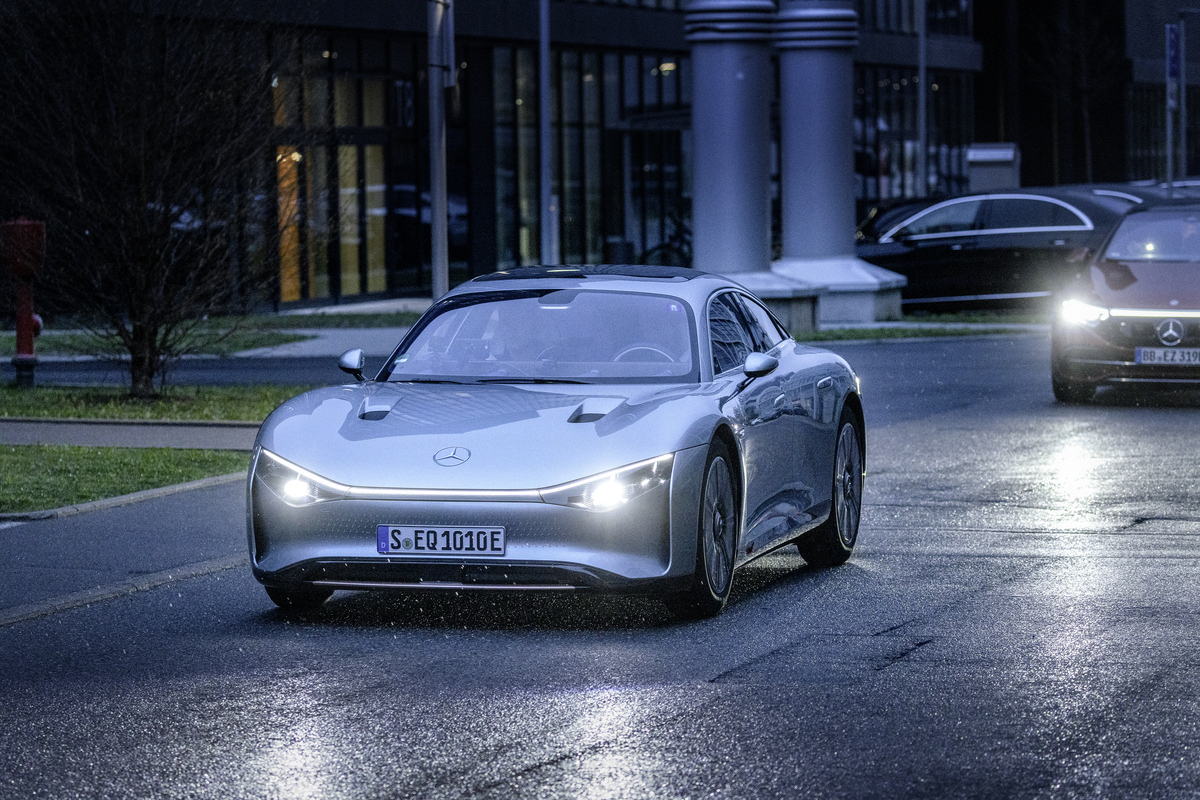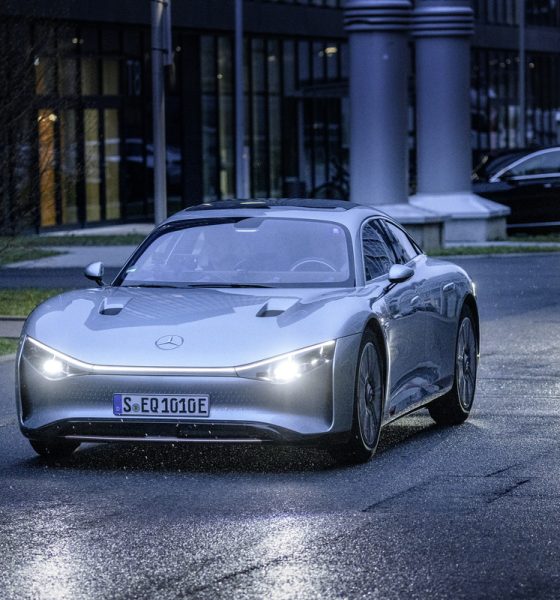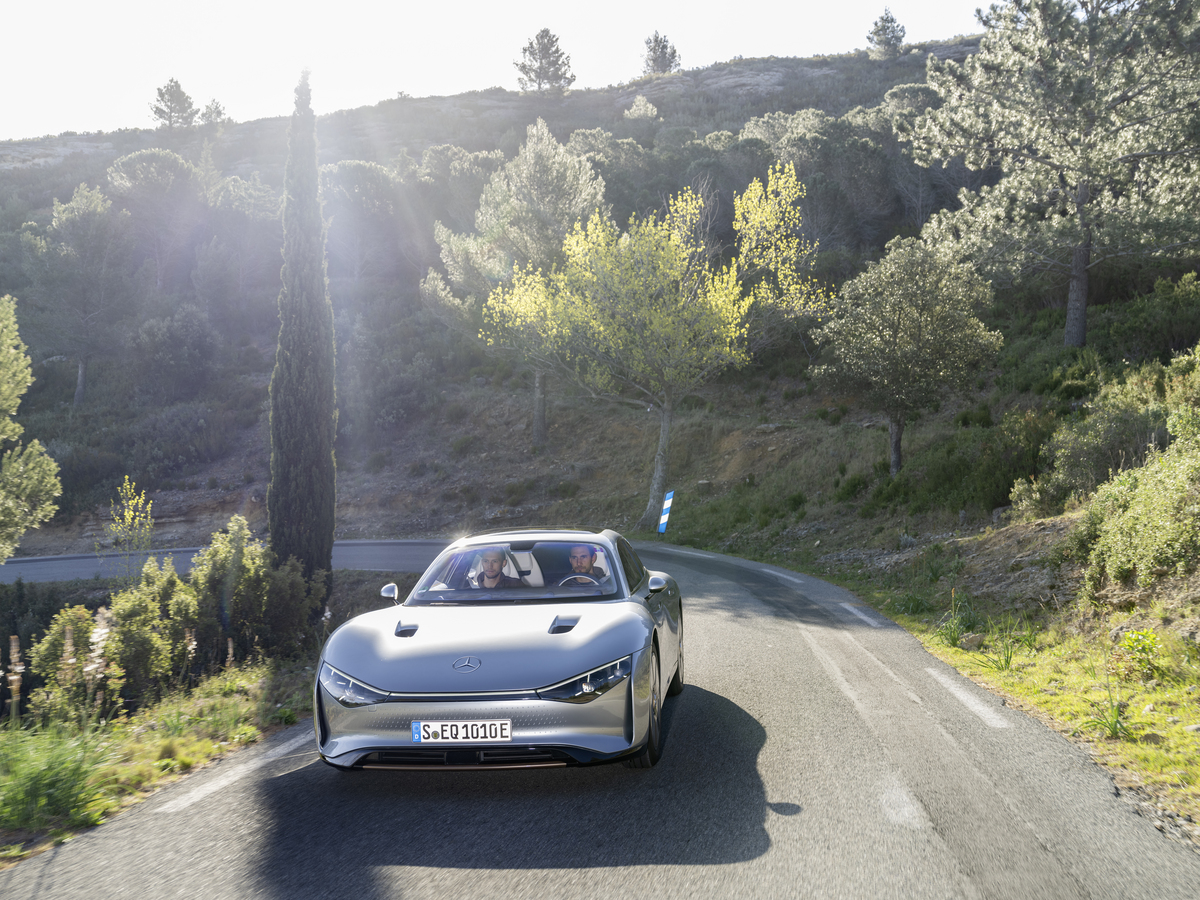

News
Why Tesla won’t lose sleep over other automakers achieving massive range ratings
Tesla is normally confronted with plenty of interesting and challenging metrics from competitors, especially in terms of range and speed. With the Mercedes-Benz VISION EQXX accomplishing a major feat of over 1,000 kilometers (620 miles) driven on a single charge earlier this week, many may wonder if Tesla engineers are scrambling around attempting to crank out some new EV with 2,000 kilometers of range. I can assure you they are not.
The accomplishments of Mercedes-Benz in its electric vehicle program are not to be slighted. While the luxury automaker is working to develop and ramp its EQ lineup, which will consist of fully and partially electric vehicles, Mercedes is definitely coming out with some pretty interesting and eye-grabbing records and points of strength, especially indicated in its most recent range ratings and assessments of its semi-autonomous driving functionality. Its most recent release from April 13 tells us the story of the VISION EQXX and how it drove 626 total miles on a charge.
“We did it! Powering through more than 1,000 kilometers with ease on a single battery charge and a consumption of only 8.7 kWh/100 km (7.1 kWh per 62 miles) in real-world traffic conditions,” Ola Källenius, Charman of the Board of Management for Mercedes-Benz Group AG, said. “The VISION EQXX is the most efficient Mercedes ever built. The technology program behind it marks a milestone in the development of electric vehicles. It underpins our strategic aim to ‘Lead in Electric.’”
Traveling on a route through Germany and Italy, crossing the towns and cities of Sindelfingen, Gotthard Tunnel, Milan, and Cassis, 11 hours and 32 minutes of driving time ended its 626-mile trek successfully with a single charge.
Erfolgreicher Roadtrip MissionXX – von Sindelfingen über die Schweizer Alpen nach Cassis an der Côte d’Azur. Der Mercedes-Benz VISION EQXX fährt über 1.000 km mit einer Batterieladung und einem Durchschnittsverbrauch von 8,7 kWh/100 km. // Successful MissionXX road trip – from Sindelfingen across the Swiss Alps to Cassis on the Cote d’Azur. The Mercedes-Benz VISION EQXX sets efficiency record – over 1,000 km on a single battery charge and average consumption of 8.7 kWh/100 km.
Many of those interested in electric vehicles may be thinking, “This is just another thing Tesla has been beaten on.” “It’s only a matter of time before others do it, too.” “Tesla won’t achieve this, they’re stuck in the 400-mile range threshold.”
Tesla, as a company, is likely excited other companies are accomplishing these endurance-type runs so they don’t have to. If the automotive industry in 2022 was the same as what it was in 2010: a gas engine-dominated sector with relatively no electric options, then sure, maybe Tesla would care. But maybe not. The landscape of the EV industry has become so obsessed with these incredible metrics that many consumers forget they won’t need over 600 miles of range. How many gas car drivers go to a dealership thinking, “I will only buy a car if it offers me 620 miles of driving on a tank?”
CEO Elon Musk even stated recently that having “too much” range is not necessarily a good thing for electric vehicles.
“We could’ve made a 600-mile Model S 12 months ago, but that would’ve made the product worse imo, as 99.9% of time you’d be carrying unneeded battery mass, which makes acceleration, handling & efficiency worse,” Musk said recently. “Even our 400+ mile range car is more than almost anyone will use.” ABC News says the average American only travels sixteen miles per day for work. U.S. Census data even says Americans only spend around 27.6 minutes driving to work one way.
Tesla has held this perspective for some time. “Mass is the enemy of both efficiency and performance, and minimizing the weight of every component is an ongoing goal for our design and engineering teams,” it said in a blog post announcing the 400-mile Model S in June 2020.“Several lessons from the engineering design and manufacturing of Model 3 and Model Y have now been carried over to Model S and Model X. This has unlocked new areas of mass reduction while maintaining the premium feel and performance of both vehicles. Additional weight savings have also been achieved through the standardization of Tesla’s in-house seat manufacturing and lighter weight materials used in our battery pack and drive units.”
While there is certainly no reason to knock on Mercedes-Benz’s accomplishments, there needs to be a relative sense of what is ultimately appropriate in terms of EV range. Endurance runs are completely legitimate and interesting ways to prove your battery and efficiency metrics, but they’re not something proven EV companies will look at down the road. The successful automakers will be focusing on avoiding supply chain issues, ramping battery supply chain manufacturing, becoming more vertically integrated, and working to create price parity between EVs and their gas counterparts.
I’d love to hear from you! If you have any comments, concerns, or questions, please email me at joey@teslarati.com. You can also reach me on Twitter @KlenderJoey, or if you have news tips, you can email us at tips@teslarati.com.

Elon Musk
Starlink passes 9 million active customers just weeks after hitting 8 million
The milestone highlights the accelerating growth of Starlink, which has now been adding over 20,000 new users per day.

SpaceX’s Starlink satellite internet service has continued its rapid global expansion, surpassing 9 million active customers just weeks after crossing the 8 million mark.
The milestone highlights the accelerating growth of Starlink, which has now been adding over 20,000 new users per day.
9 million customers
In a post on X, SpaceX stated that Starlink now serves over 9 million active users across 155 countries, territories, and markets. The company reached 8 million customers in early November, meaning it added roughly 1 million subscribers in under seven weeks, or about 21,275 new users on average per day.
“Starlink is connecting more than 9M active customers with high-speed internet across 155 countries, territories, and many other markets,” Starlink wrote in a post on its official X account. SpaceX President Gwynne Shotwell also celebrated the milestone on X. “A huge thank you to all of our customers and congrats to the Starlink team for such an incredible product,” she wrote.
That growth rate reflects both rising demand for broadband in underserved regions and Starlink’s expanding satellite constellation, which now includes more than 9,000 low-Earth-orbit satellites designed to deliver high-speed, low-latency internet worldwide.
Starlink’s momentum
Starlink’s momentum has been building up. SpaceX reported 4.6 million Starlink customers in December 2024, followed by 7 million by August 2025, and 8 million customers in November. Independent data also suggests Starlink usage is rising sharply, with Cloudflare reporting that global web traffic from Starlink users more than doubled in 2025, as noted in an Insider report.
Starlink’s momentum is increasingly tied to SpaceX’s broader financial outlook. Elon Musk has said the satellite network is “by far” the company’s largest revenue driver, and reports suggest SpaceX may be positioning itself for an initial public offering as soon as next year, with valuations estimated as high as $1.5 trillion. Musk has also suggested in the past that Starlink could have its own IPO in the future.
News
NVIDIA Director of Robotics: Tesla FSD v14 is the first AI to pass the “Physical Turing Test”
After testing FSD v14, Fan stated that his experience with FSD felt magical at first, but it soon started to feel like a routine.

NVIDIA Director of Robotics Jim Fan has praised Tesla’s Full Self-Driving (Supervised) v14 as the first AI to pass what he described as a “Physical Turing Test.”
After testing FSD v14, Fan stated that his experience with FSD felt magical at first, but it soon started to feel like a routine. And just like smartphones today, removing it now would “actively hurt.”
Jim Fan’s hands-on FSD v14 impressions
Fan, a leading researcher in embodied AI who is currently solving Physical AI at NVIDIA and spearheading the company’s Project GR00T initiative, noted that he actually was late to the Tesla game. He was, however, one of the first to try out FSD v14.
“I was very late to own a Tesla but among the earliest to try out FSD v14. It’s perhaps the first time I experience an AI that passes the Physical Turing Test: after a long day at work, you press a button, lay back, and couldn’t tell if a neural net or a human drove you home,” Fan wrote in a post on X.
Fan added: “Despite knowing exactly how robot learning works, I still find it magical watching the steering wheel turn by itself. First it feels surreal, next it becomes routine. Then, like the smartphone, taking it away actively hurts. This is how humanity gets rewired and glued to god-like technologies.”
The Physical Turing Test
The original Turing Test was conceived by Alan Turing in 1950, and it was aimed at determining if a machine could exhibit behavior that is equivalent to or indistinguishable from a human. By focusing on text-based conversations, the original Turing Test set a high bar for natural language processing and machine learning.
This test has been passed by today’s large language models. However, the capability to converse in a humanlike manner is a completely different challenge from performing real-world problem-solving or physical interactions. Thus, Fan introduced the Physical Turing Test, which challenges AI systems to demonstrate intelligence through physical actions.
Based on Fan’s comments, Tesla has demonstrated these intelligent physical actions with FSD v14. Elon Musk agreed with the NVIDIA executive, stating in a post on X that with FSD v14, “you can sense the sentience maturing.” Musk also praised Tesla AI, calling it the best “real-world AI” today.
News
Tesla AI team burns the Christmas midnight oil by releasing FSD v14.2.2.1
The update was released just a day after FSD v14.2.2 started rolling out to customers.

Tesla is burning the midnight oil this Christmas, with the Tesla AI team quietly rolling out Full Self-Driving (Supervised) v14.2.2.1 just a day after FSD v14.2.2 started rolling out to customers.
Tesla owner shares insights on FSD v14.2.2.1
Longtime Tesla owner and FSD tester @BLKMDL3 shared some insights following several drives with FSD v14.2.2.1 in rainy Los Angeles conditions with standing water and faded lane lines. He reported zero steering hesitation or stutter, confident lane changes, and maneuvers executed with precision that evoked the performance of Tesla’s driverless Robotaxis in Austin.
Parking performance impressed, with most spots nailed perfectly, including tight, sharp turns, in single attempts without shaky steering. One minor offset happened only due to another vehicle that was parked over the line, which FSD accommodated by a few extra inches. In rain that typically erases road markings, FSD visualized lanes and turn lines better than humans, positioning itself flawlessly when entering new streets as well.
“Took it up a dark, wet, and twisty canyon road up and down the hill tonight and it went very well as to be expected. Stayed centered in the lane, kept speed well and gives a confidence inspiring steering feel where it handles these curvy roads better than the majority of human drivers,” the Tesla owner wrote in a post on X.
Tesla’s FSD v14.2.2 update
Just a day before FSD v14.2.2.1’s release, Tesla rolled out FSD v14.2.2, which was focused on smoother real-world performance, better obstacle awareness, and precise end-of-trip routing. According to the update’s release notes, FSD v14.2.2 upgrades the vision encoder neural network with higher resolution features, enhancing detection of emergency vehicles, road obstacles, and human gestures.
New Arrival Options also allowed users to select preferred drop-off styles, such as Parking Lot, Street, Driveway, Parking Garage, or Curbside, with the navigation pin automatically adjusting to the ideal spot. Other refinements include pulling over for emergency vehicles, real-time vision-based detours for blocked roads, improved gate and debris handling, and Speed Profiles for customized driving styles.








